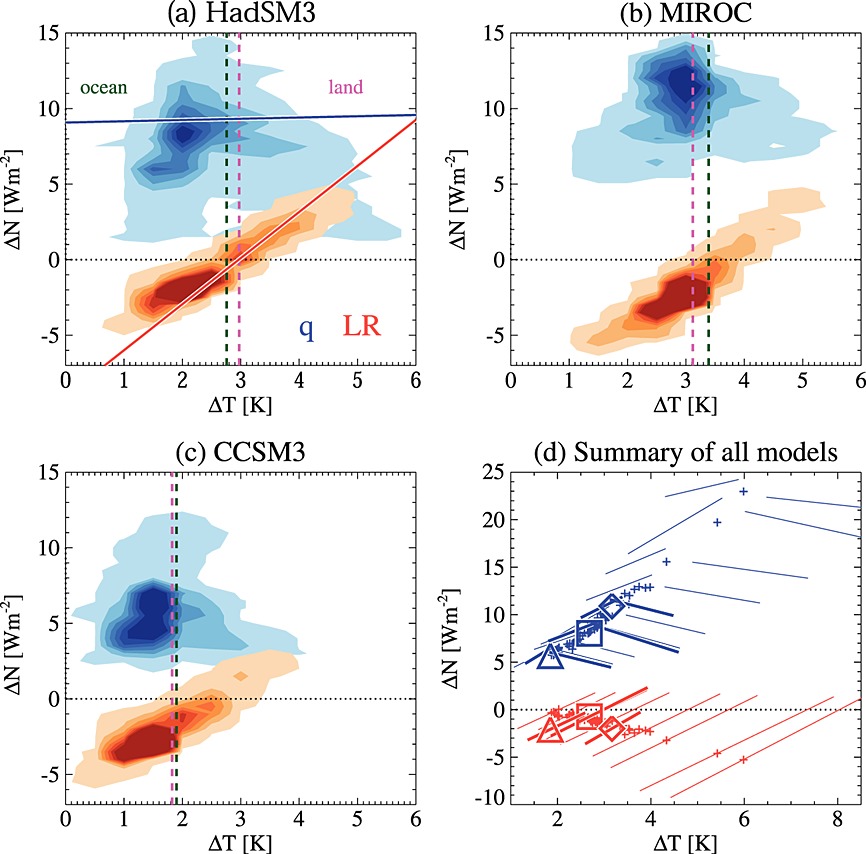Radiative forcing and response

I’ve done a fair bit of research on radiative forcing and feedbacks, especially short-term adjustment to forcing, but mostly not for a long time. I answered a challenge from Patrick Taylor at NASA Langley to explain the pattern of the regional tropical water vapour and lapse rate feedbacks. These don’t show a sharp anti-correlation like the tropical mean water vapour and lapse rate feedbacks across climate models, but they are largely explained by simple processes. Regional variations in the tropical lapse rate feedback in particular are determined by the difference in the varying tropical surface temperature and the fairly constant atmospheric temperature. This work was published as Lambert and Taylor, (2014).
Angus Ferraro published a follow up, Ferraro et al., (2015), tested these ideas using satellite observations. It was found that the ideas are largely supported, providing a “useful process-based test of climate models” even if the results are unconnected to determining the more important mean tropical lapse rate and water vapour feedbacks.
My earliest paper on forcing and response was Lambert and Faull, (2007), which described the basic differences in global mean response between carbon dioxide and solar forced climate model experiments: tropospheric adjustments deal with forcing absorbed by the atmosphere by reducing precipitation in the carbon dioxide case and increasing outgoing longwave in the solar case. It took four years to get it published, the results were mostly written-up by others before I got it out there and the results that weren’t published by others were better reproduced elsewhere afterwards. (Also the altitude hypothesis for tropospheric adjustment in the final paragraph is almost certainly wrong.) But… it was the first piece of work I ever did on my own. Having the idea, testing it and realising that it was right convinced me to become a professional scientist. Whether this is good for me or anyone else remains unclear.